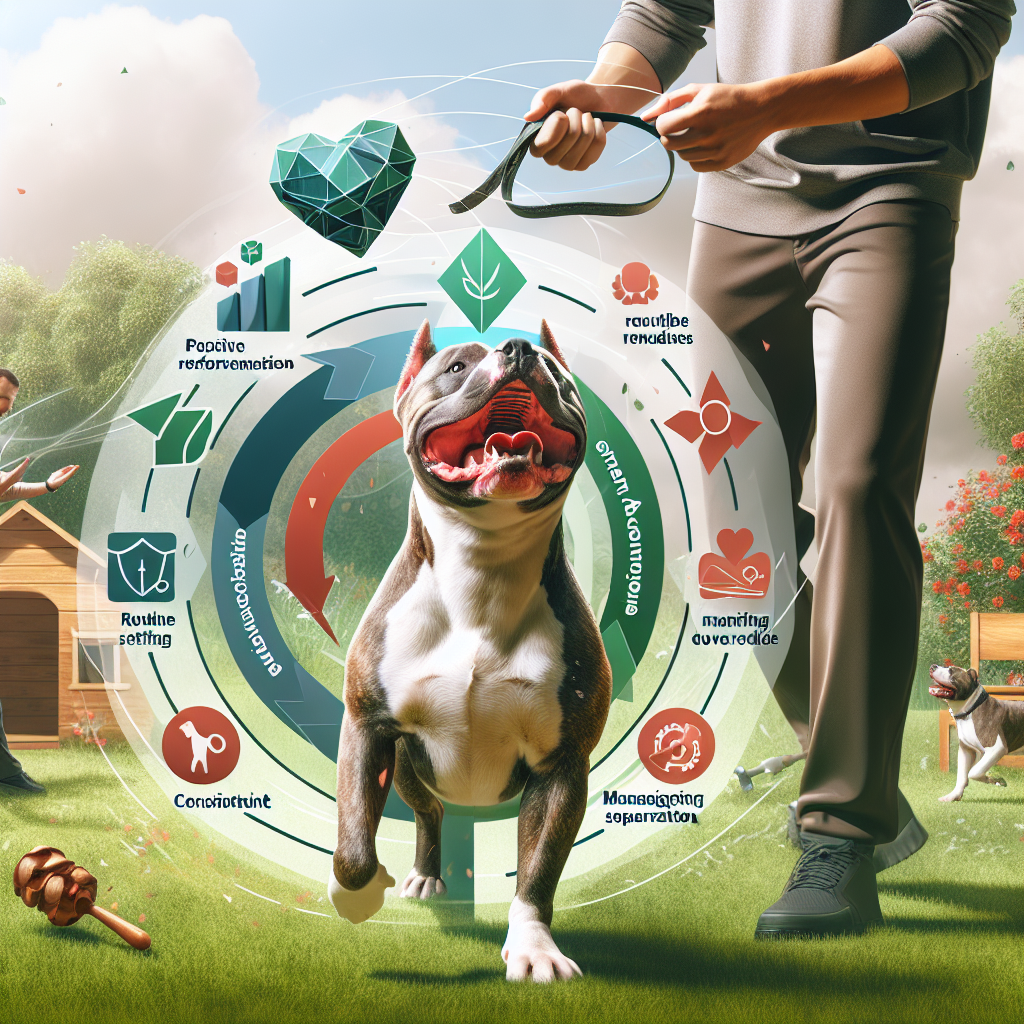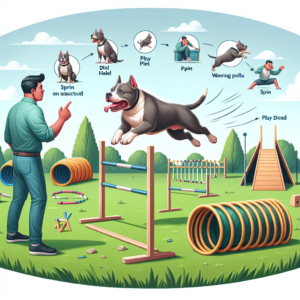Contents
- 1 Training an American Bully Dog: Overcoming Challenges and Effective Solutions
Training an American Bully Dog: Overcoming Challenges and Effective Solutions
Training an American Bully dog can be an incredibly rewarding experience, but like all breeds, they come with their own set of unique challenges. American Bullies are known for their muscular build, loyalty, and intelligence, but they can also exhibit stubbornness, independence, and certain behavioral traits that may make training more difficult at times. Understanding these challenges and employing the right techniques is crucial to achieving a well-behaved, obedient companion.
In this article, we’ll explore the common training challenges faced by American Bully owners, offer effective solutions and training techniques, and discuss when seeking professional help might be necessary.
Introduction: Addressing the Unique Training Challenges of American Bully Dogs
While American Bullies are generally intelligent and eager to please, they can also exhibit traits that may make training a bit more challenging compared to other breeds. Their strong-willed nature, combined with their loyalty and protective instincts, means that owners often need to invest extra time and patience in training. However, with the right approach, these challenges can be easily overcome.
Effective training not only helps ensure your American Bully behaves appropriately in different situations but also strengthens the bond between you and your dog. This comprehensive guide will help you navigate some of the most common challenges and provide solutions that will help you train your American Bully effectively.
Common Training Challenges: Breed-Specific Issues
1. Stubbornness and Independence
American Bullies are known for their independent nature. While they are often eager to please, they can sometimes be stubborn when it comes to following commands. This can make training difficult, especially for first-time dog owners or those who may not understand the breed’s unique personality.
Real-Life Scenario: Imagine you’re trying to teach your American Bully to come when called. They may look at you with a confident expression, as if they are deciding whether it’s worth their time. They may not immediately respond, testing your patience and your ability to remain consistent with your training.
2. Excessive Energy
American Bullies are high-energy dogs. They need regular exercise to burn off their energy, and without it, they can become restless and display undesirable behaviors such as excessive barking, chewing, or jumping. An under-exercised dog may also become difficult to train, as they may not be able to focus on tasks if they have excess energy.
Real-Life Scenario: You bring your American Bully to a training session, but they are more interested in running around and exploring than listening to commands. It becomes clear that without sufficient physical activity beforehand, their focus will be compromised.
3. Protectiveness and Aggression
American Bullies, like many working and guarding breeds, can be naturally protective. While this makes them great guard dogs, it can also lead to behavioral challenges if not managed properly. If they perceive a threat to their family or territory, they may react aggressively. This can make socialization and training around strangers more difficult.
Real-Life Scenario: During a walk, your American Bully may react aggressively when they see another dog or person approaching. They may bark or pull on the leash, testing your ability to control them in these situations.
4. Separation Anxiety
American Bullies are known to be incredibly loyal to their owners, and this can sometimes translate into separation anxiety. They may become distressed or act out when left alone for long periods, making training at home more difficult.
Real-Life Scenario: When left alone, your American Bully might start destructive behaviors such as chewing furniture or tearing up household items. This can often be an indicator of separation anxiety rather than behavioral disobedience.
Effective Training Techniques: Overcoming Challenges
Training an American Bully requires patience, consistency, and the right techniques. Here are some tailored solutions to help you overcome the breed’s specific challenges:
1. Patience and Positive Reinforcement
American Bullies respond best to positive reinforcement. This method rewards your dog for correct behavior, motivating them to repeat those actions in the future. Positive reinforcement not only teaches your dog what you want them to do but also strengthens the bond between you and your pet.
Techniques:
- Use treats, toys, and verbal praise to reward desired behaviors.
- Be consistent in your training, rewarding immediately after the correct behavior occurs so that your dog understands what they’re being rewarded for.
- Avoid punishment-based techniques, as these can lead to fear, anxiety, and potentially aggressive behavior.
2. Breaking Training Into Small, Achievable Steps
Due to their independent nature, American Bullies may not immediately grasp commands. Breaking down the training process into smaller steps can make it easier for them to understand and follow along. Start with simple commands, such as “sit” or “stay,” and gradually increase the difficulty as your dog’s behavior improves.
Example: Start by teaching your dog the “sit” command in a quiet space with minimal distractions. Once they master it, add distractions and practice in more stimulating environments, such as the park.
3. Establishing a Consistent Routine
American Bullies thrive on routine. Establishing a consistent daily schedule for training, exercise, and meals will help your dog learn expectations and behavior patterns. Consistency is key in reinforcing desired behaviors and preventing bad habits from forming.
Routine Tips:
- Keep training sessions short and focused—American Bullies may lose interest in long training sessions.
- Stick to regular times for walks, meals, and training to help your dog anticipate the day’s activities.
- Ensure your dog receives plenty of physical exercise to reduce excess energy, making them more receptive to training.
4. Socialization and Exposure to New Experiences
To address protectiveness and aggression, early and ongoing socialization is crucial. Expose your American Bully to a wide variety of people, environments, and other dogs. This helps them develop better social skills and reduces the likelihood of aggression toward strangers or unfamiliar situations.
Socialization Techniques:
- Introduce your dog to different people and animals gradually, ensuring positive experiences in controlled settings.
- Reward calm behavior around new stimuli to reinforce their ability to stay composed in these situations.
- Gradually expose your dog to different environments, such as parks, pet stores, or busy streets, to help them adapt to various situations.
5. Dealing with Separation Anxiety
To help manage separation anxiety, start by gradually getting your American Bully used to being alone. Begin by leaving them alone for short periods, gradually increasing the duration as they adjust. Providing them with toys, puzzle feeders, and a comfortable space can help keep them occupied when you are away.
Separation Anxiety Tips:
- Avoid making a big fuss when leaving or returning home, as this can increase anxiety.
- Provide comforting items, such as a favorite blanket or toy, to soothe your dog in your absence.
- Consider crate training to give your dog a sense of security when alone.
Professional Training Help: When to Seek Assistance
While many American Bully owners can successfully train their dogs using the techniques mentioned above, there are times when professional help may be necessary. If you’re struggling with behavioral issues that are beyond your control, seeking the guidance of a professional dog trainer can make a significant difference.
When to Seek Professional Help:
- If you are experiencing persistent aggression or fear-based behaviors.
- If your dog is not responding to positive reinforcement or is becoming frustrated during training.
- If you feel overwhelmed or unsure about how to proceed with training.
How to Find a Reputable Trainer:
- Look for trainers who have experience working with American Bullies or similar breeds.
- Ask for recommendations from fellow dog owners or veterinarians.
- Check the trainer’s certifications and ensure they use positive reinforcement methods.
Conclusion
Training an American Bully requires a deep understanding of their unique challenges and needs. While their independent nature, high energy, and loyalty can sometimes make training more difficult, using the right techniques and approaches can help you develop a strong, positive relationship with your dog. Patience, consistency, and positive reinforcement are key to overcoming training challenges and ensuring your American Bully becomes a well-behaved, happy companion. If necessary, don’t hesitate to seek professional help to guide you through more complex training issues. With dedication and the right support, you can enjoy a fulfilling training journey with your American Bully.


